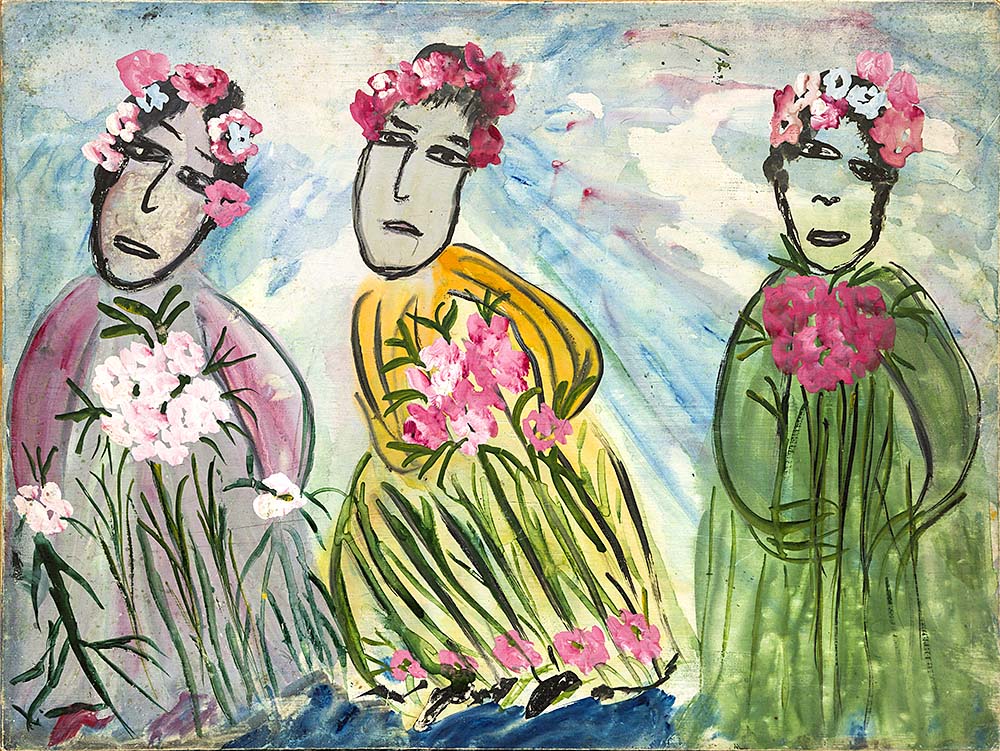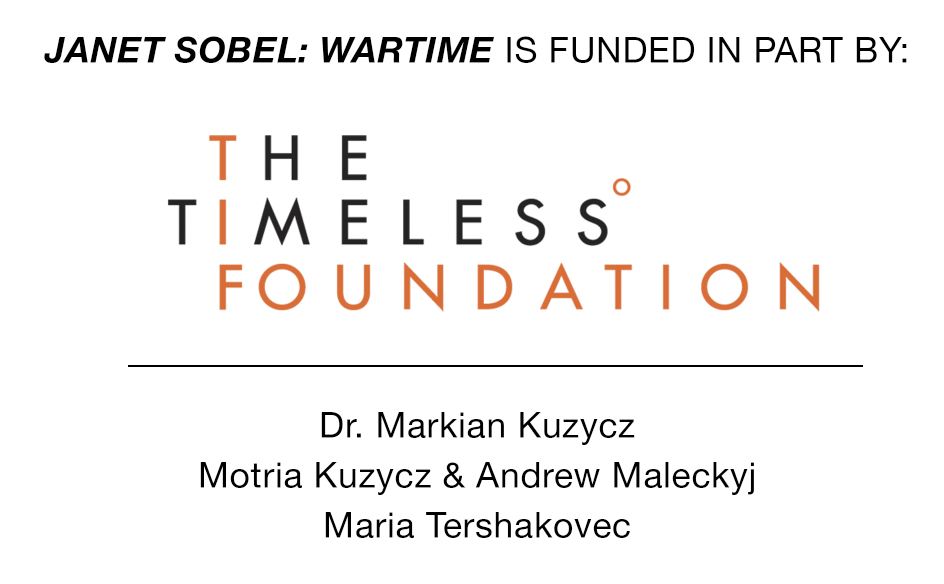
28 April – 3 September 2023
Janet Sobel is a rediscovered Ukrainian American artist who influenced the New York art world in the 1930s and 1940s, shortly after she began painting.
Sobel (1893–1968) was born Jennie Olechovsky in what is now Dnipro, Ukraine. She moved to Brooklyn with her mother and siblings in 1908, shortly after her father’s death. At 16, she married Max Sobel, with whom she had five children.
Sobel took up painting at the age of 44, in 1937. Her son Sol, an art student at the time, recognized his mother’s talent and promoted her work. Sobel’s early work often incorporated images and experiences from her Ukrainian childhood: the abundant floral motifs of Ukrainian folk art, traditional Jewish families, soldiers with cannons and imperial armies. Her main goal was visual intensity, which she attained with impressive regularity.
The art collector Peggy Guggenheim included Sobel’s work in a 1945 group show called The Women at her Manhattan gallery Art of This Century; the following year, Sobel had a solo show at the gallery.
Janet Sobel: Wartime is the first museum exhibition focusing on Sobel’s early work. Over forty-five drawings, created in the decade after she began painting in 1937, highlight her rise to much-talked-about and prominent artist. This important period in her artistic career positioned her to be part of the ground-breaking Ninth Street Art Exhibition (1951), which marked the formal debut of Abstract Expressionism, the first American art movement with international influence. Sobel was one of only three women included in the show.
But her fame did not last long. She was not easily categorized by the art world, and the media often referred to her as a mother and housewife first, then as an artist. While she initially received attention for being an outsider artist (self-taught), she was just as quickly forgotten for the same reason.
Several recent press articles refer to Sobel pioneering the drip-painting technique made famous by Jackson Pollock. Her best-known work, Milky Way (1945), at the Museum of Modern Art in New York, was made a year before Pollock’s first drip painting, Free Form, which is also at MoMA.
Sobel is said to have completed more than 1,000 works. This exhibition is organized from the private collection of Gary Snyder.
